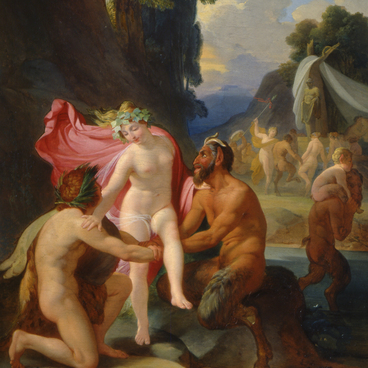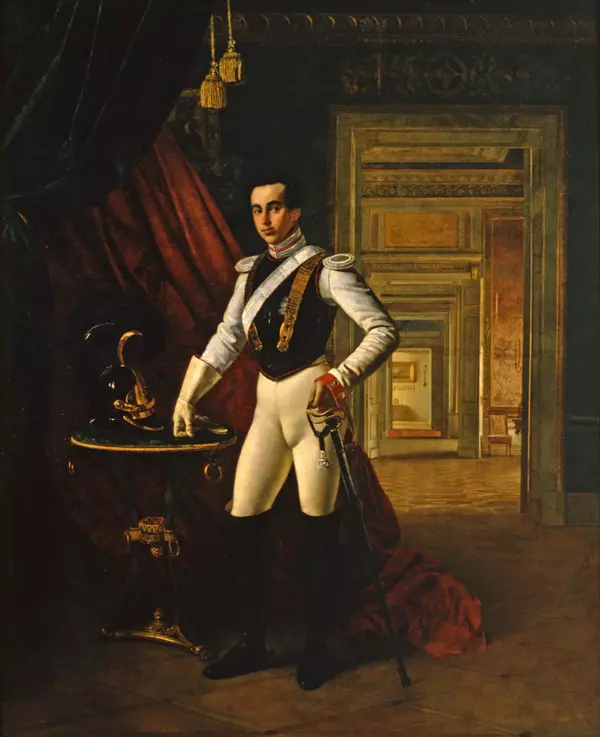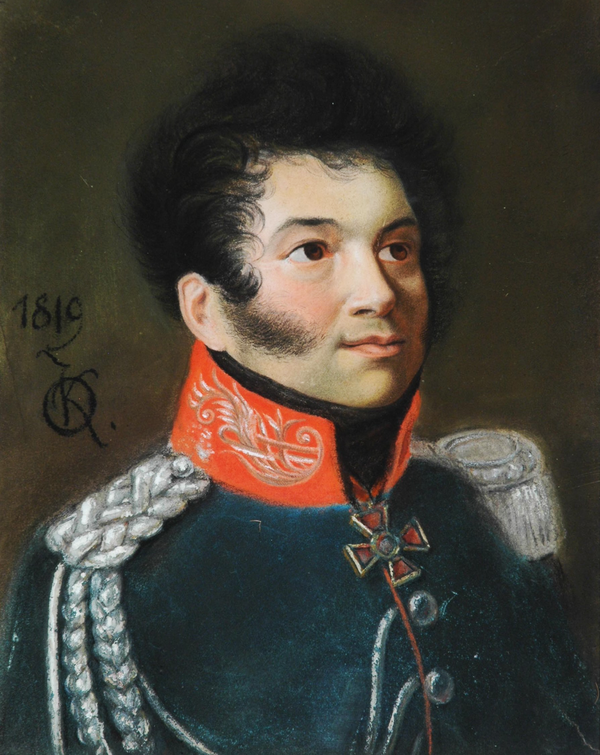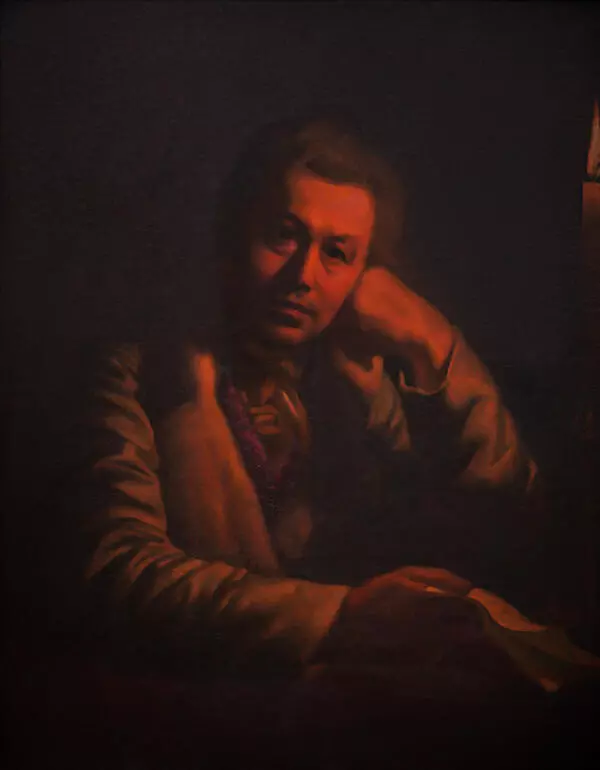For more than fifty years, this picture had been registered in the books of the Primorye Picture Gallery as the Portrait of an Unknown Man in a Fur Coat. No painter was specified.
When working in the archives of the Tretyakov Gallery, where the painting had come to Vladivostok from, the museum’s Senior Researcher Olga Batievskaia discovered the words “Kiprensky type” written on the painting’s inventory card. She found out that the portrait had a composition similar to that of the Portrait of Shishmaryov by Orest Kiprensky.
In 1982, the State Russian Museum conducted a design and technical examination of the Portrait of an Unknown Man to confirm that it had been really painted by Orest Kiprensky. The Russian Museum’s expert opinion said that “the modelling of the face and clothing details, the background painting, the array of pigments, the type of craquelure…” made it possible to confirm Kiprensky’s authorship and establish the date as 1816-1819.’
However, the identity of the portrayed has remained an enigma. Experts have advanced various theories. Some believed that the person on the painting had resemblance to philosopher and publicist Pyotr Chaadaev. Others thought that Kiprensky had painted a respectable diplomat, maybe an Englishman. Still others suggested that the portrait showed Georgian Prince Pyotr Shalikov (Shalikashvili), a friend of Nikolay Karamzin, Ivan Krylov, Alexandr Pushkin, and Konstantin Batyushkov. However, none of these theories are proved, so the Portrait of an Unknown Man in a Fur Coat has retained its original name till nowadays.
Orest Kiprensky was the first Russian romantic painter. He was brought up by Adam Schwalbe, a serf of German origin. But Orest’s real father was landowner Aleksey Diakonov who released his illegitimate son from serfdom in his childhood and provided him with support.
When Orest was six years old, he entered a boarding school at the Imperial Academy of Arts to later become the student at the Academy where he was in the class of history painting. Nevertheless, his main painting genre was portrait.
Deliberately shifting from the cold rationality of classical portraits, Orest Kiprensky painted his models in happy moments of their lives and sought to reveal their best spiritual qualities. He painted open and intelligent faces.
Kiprensky often drew on the experience of the European painting of the 17th century finding inspiration in the works by Rembrandt, Rubens, and van Dyck. ‘The sight of the works of the genius evokes the courage, which in one moment substitutes several years of experience, ’ the artist wrote.
His mastery of taking after great painters of the past was such that his contemporaries believed some of his paintings to be antique.
When working in the archives of the Tretyakov Gallery, where the painting had come to Vladivostok from, the museum’s Senior Researcher Olga Batievskaia discovered the words “Kiprensky type” written on the painting’s inventory card. She found out that the portrait had a composition similar to that of the Portrait of Shishmaryov by Orest Kiprensky.
In 1982, the State Russian Museum conducted a design and technical examination of the Portrait of an Unknown Man to confirm that it had been really painted by Orest Kiprensky. The Russian Museum’s expert opinion said that “the modelling of the face and clothing details, the background painting, the array of pigments, the type of craquelure…” made it possible to confirm Kiprensky’s authorship and establish the date as 1816-1819.’
However, the identity of the portrayed has remained an enigma. Experts have advanced various theories. Some believed that the person on the painting had resemblance to philosopher and publicist Pyotr Chaadaev. Others thought that Kiprensky had painted a respectable diplomat, maybe an Englishman. Still others suggested that the portrait showed Georgian Prince Pyotr Shalikov (Shalikashvili), a friend of Nikolay Karamzin, Ivan Krylov, Alexandr Pushkin, and Konstantin Batyushkov. However, none of these theories are proved, so the Portrait of an Unknown Man in a Fur Coat has retained its original name till nowadays.
Orest Kiprensky was the first Russian romantic painter. He was brought up by Adam Schwalbe, a serf of German origin. But Orest’s real father was landowner Aleksey Diakonov who released his illegitimate son from serfdom in his childhood and provided him with support.
When Orest was six years old, he entered a boarding school at the Imperial Academy of Arts to later become the student at the Academy where he was in the class of history painting. Nevertheless, his main painting genre was portrait.
Deliberately shifting from the cold rationality of classical portraits, Orest Kiprensky painted his models in happy moments of their lives and sought to reveal their best spiritual qualities. He painted open and intelligent faces.
Kiprensky often drew on the experience of the European painting of the 17th century finding inspiration in the works by Rembrandt, Rubens, and van Dyck. ‘The sight of the works of the genius evokes the courage, which in one moment substitutes several years of experience, ’ the artist wrote.
His mastery of taking after great painters of the past was such that his contemporaries believed some of his paintings to be antique.









